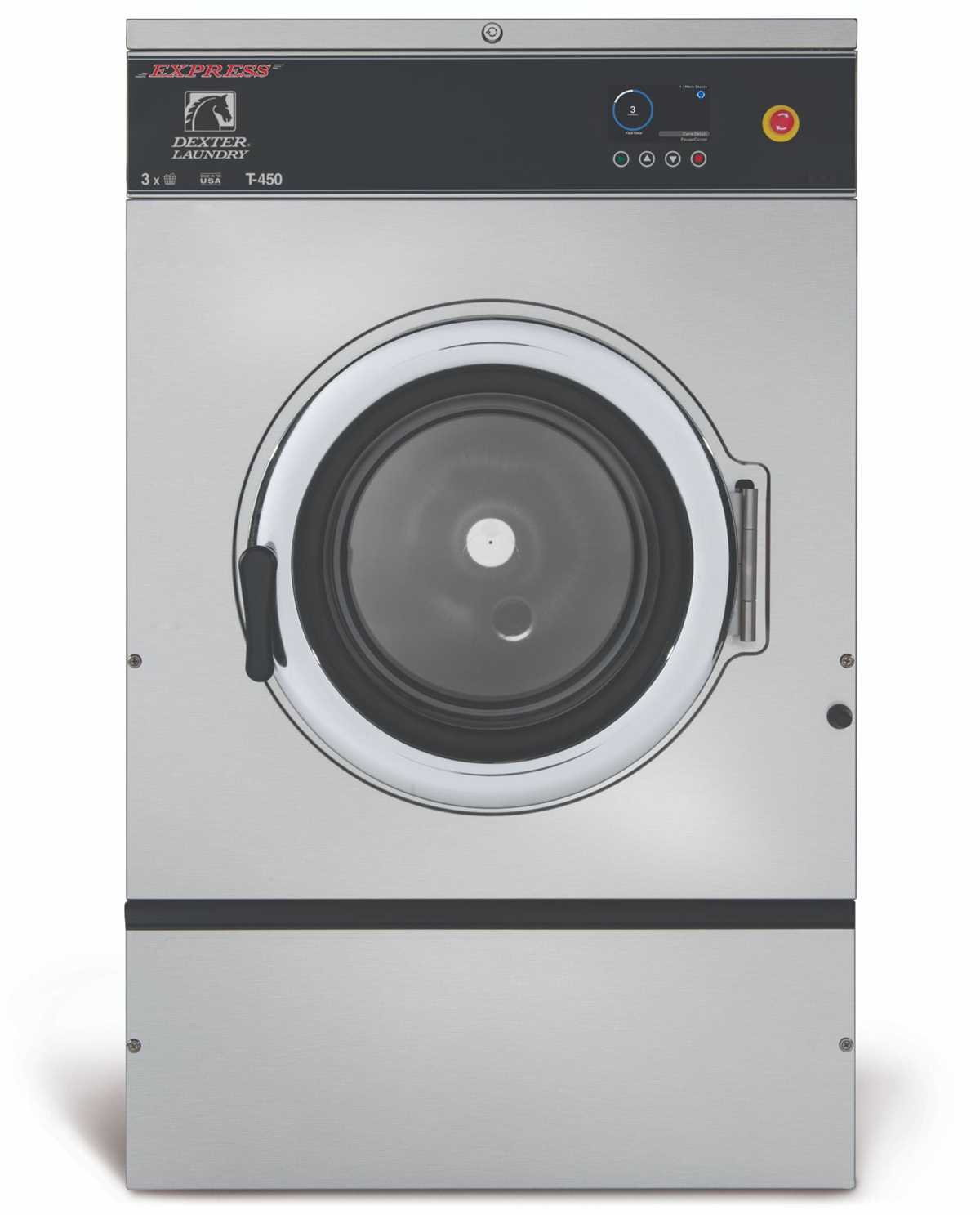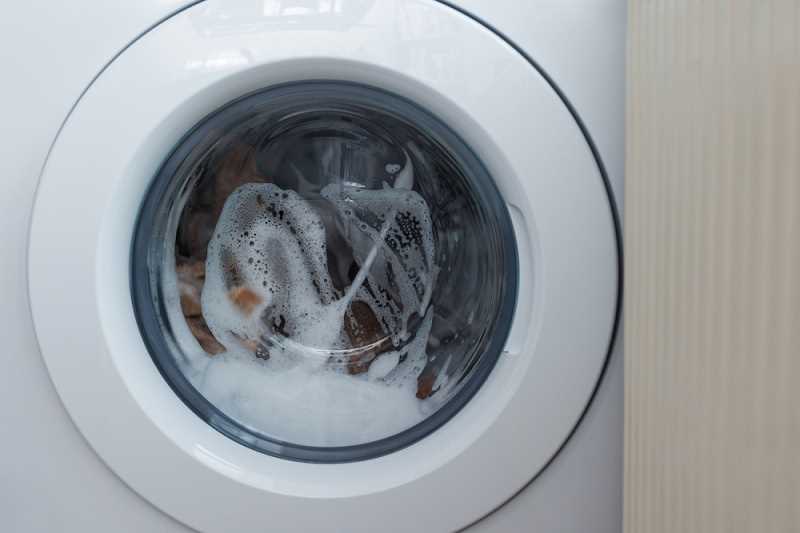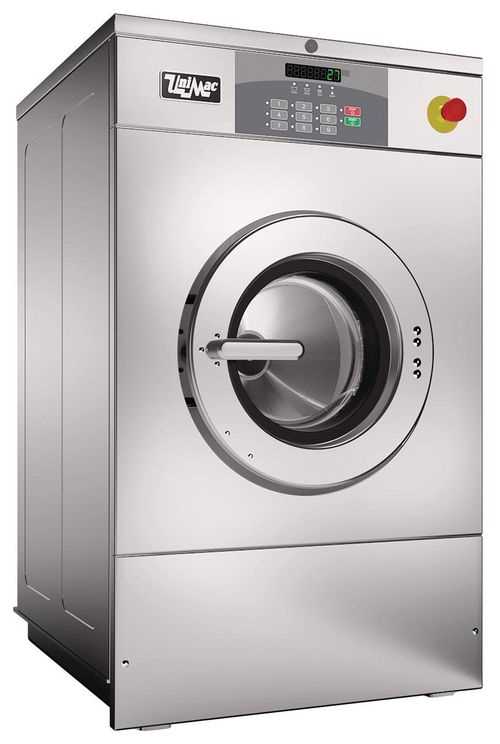


When it comes to washing machines, one important factor to consider is the amount of force or acceleration generated during the spin cycle. This force, commonly referred to as G-force, plays a crucial role in removing dirt and moisture from the clothes. Understanding how much force is generated can help consumers choose a washing machine that best suits their needs.
The G-force in washing machines is typically measured in terms of the acceleration due to gravity (9.8 m/s^2). A higher G-force means greater acceleration, resulting in more efficient drying and shorter drying times. It is worth noting that different washing machines have different G-force ratings, with some models capable of generating up to 1,600 Gs.
Higher G-force washing machines are particularly beneficial for those looking for quick and efficient washing cycles. The increased acceleration helps in removing more moisture from the clothes, which can lead to reduced drying times. Additionally, high G-force washing machines are often associated with better overall cleaning performance.
However, it is important to consider that higher G-force ratings may also result in increased wear and tear on clothes and washing machine components. Delicate fabrics may not fare well in high G-force environments, as they can be subjected to excessive forces that may cause damage. It is therefore essential to strike a balance between the desired G-force and the needs of your laundry, ensuring that your clothes are cleaned and dried effectively without unnecessary damage.
Exploring the G-Force in Washing Machines
When it comes to washing machines, one important factor that determines their performance is the g-force they generate. G-force, short for gravitational force, measures the force exerted on objects due to gravity. In the context of washing machines, g-force refers to the force that causes water and detergent to be pressed out of the clothes during the spin cycle.
How is g-force measured in washing machines?
G-force in washing machines is typically measured in terms of the number of times the force of gravity is exerted on the laundry. For example, a washing machine with a g-force rating of 100 means that the clothes experience a force equivalent to 100 times the force of gravity. The higher the g-force, the more water and detergent are extracted from the clothes, resulting in faster drying times.
Why is g-force important?

The g-force generated by a washing machine plays a crucial role in the efficiency of the cleaning process. Higher g-force means that more water is removed from the clothes, reducing the drying time required. This not only saves energy but also allows for faster turnaround times for doing laundry.
Additionally, a higher g-force helps to remove more dirt and stains from the clothes. The force exerted during the spin cycle helps to dislodge and expel particles that are trapped in the fabric. This results in cleaner and fresher clothes after each wash.
How much g-force is generated in washing machines?

The g-force generated in washing machines can vary depending on the model and manufacturer. While some machines may have a g-force rating as low as 100, high-end models can achieve g-forces exceeding 200. It is important to consider the g-force rating when purchasing a washing machine to ensure that it meets your specific needs and preferences.
Conclusion

The g-force generated in washing machines is a critical factor that impacts the cleaning and drying performance. Higher g-forces lead to faster drying times and cleaner clothes. Understanding and considering the g-force rating of a washing machine can help you make an informed decision when choosing the right appliance for your laundry needs.
The Magnitude of Force Generated during Washing
Washing machines are designed to apply a significant amount of force on clothes during the washing process. This force is known as g-force, which stands for gravitational force.
The magnitude of g-force generated in a washing machine depends on various factors such as the size and speed of the drum and the level of water inside. Typically, washing machines can generate a g-force ranging from 300 to 600 g.
Factors Affecting G-Force in Washing Machines
- Drum Size: The larger the drum size, the higher the g-force generated. This is because a larger drum provides more space for clothes to move, resulting in increased centrifugal force.
- Drum Speed: The faster the drum rotates, the higher the g-force generated. High spin speeds create greater centrifugal force, leading to better water extraction from the clothes.
- Water Level: The level of water in the drum also affects the g-force. Higher water levels can reduce the g-force generated as the water acts as a cushioning agent, reducing the force applied on the clothes.
Impact of G-Force on Washing
The g-force generated during the washing process has several impacts:
- Cleaning Efficiency: The higher the g-force, the better the cleaning efficiency. The force applied on clothes helps to remove dirt and stains more effectively.
- Water Extraction: Higher g-forces result in better water extraction from the clothes. This helps in reducing drying time and energy consumption.
- Wear and Tear: Excessive g-forces can cause wear and tear on clothes, especially delicate fabrics. It is important to consider the fabric type and adjust the washing machine settings accordingly to prevent damage.
Conclusion
The magnitude of force generated during washing depends on factors such as the drum size, speed, and water level. Higher g-forces improve cleaning efficiency and water extraction, but they can also cause wear and tear on delicate fabrics. It is essential to understand these factors and adjust the settings accordingly for optimal washing results.
Measuring the G-Force in Modern Washing Machines
The G-Force in modern washing machines is an important factor to consider when purchasing a new appliance. It is a measure of the acceleration experienced by the clothes during the spin cycle, and it determines how effectively the machine can remove water from the fabric.
Understanding G-Force

G-Force, or gravitational force, is a measure of the acceleration due to gravity. It is commonly used to describe the force experienced by an object during rapid motion, such as in a washing machine’s spin cycle.
In washing machines, the G-Force is typically measured in terms of multiples of the acceleration due to gravity (1 G). For example, a G-Force of 5 means that the clothes experience an acceleration 5 times greater than the force of gravity.
Importance of G-Force in Washing Machines

The G-Force in a washing machine is important because it affects the efficiency and effectiveness of the spin cycle. A higher G-Force can remove more water from the clothes, resulting in shorter drying times and potentially energy savings.
Higher G-Forces also contribute to better cleaning performance by allowing the detergent to penetrate the fabric more effectively. The increased acceleration helps to dislodge dirt and stains, improving the overall washing results.
Measuring G-Force

Manufacturers usually provide information about the G-Force of their washing machines. It is typically listed in the specifications or user manual. The G-Force can vary depending on the model, but modern washing machines often have a G-Force range of 100-1800.
One way to measure the G-Force is by using an accelerometer, which is a device that detects changes in acceleration. By attaching an accelerometer to the washing machine drum, the G-Force can be measured directly during the spin cycle.
Conclusion
Understanding and measuring the G-Force in modern washing machines is essential for selecting an appliance that meets your specific needs. A higher G-Force can result in better water extraction and cleaning performance, potentially improving the efficiency of your laundry routine.
The Impact of G-Force on Washing Efficiency

The g-force is a crucial factor in determining the efficiency of washing machines. It refers to the gravitational force experienced by an object during the spin cycle, measured in multiples of the acceleration due to gravity (9.8 m/s²). The higher the g-force, the faster the drum rotates, resulting in increased washing efficiency.
One of the main benefits of a higher g-force is that it extracts more water from the clothes during the spin cycle. This leads to shorter drying time and reduced energy consumption from the dryer. Additionally, the higher centrifugal force helps to remove dirt particles and detergent residue, resulting in cleaner and fresher clothes.
A washing machine with a low g-force may not be able to effectively remove stubborn stains and dirt particles, as the lower rotational speed means less force acting on the clothes. This can result in an inadequate cleaning performance, requiring additional cycles or hand washing to achieve the desired cleanliness.
Manufacturers often specify the maximum g-force of their washing machines, which can range from 400 to 2000 g. It is important to consider the g-force when choosing a washing machine, as a higher g-force will generally indicate better washing efficiency.
However, it’s worth noting that a higher g-force can result in increased wear and tear on the clothes and the washing machine itself. Delicate fabrics and materials may be damaged or stretched under the higher centrifugal forces. Therefore, it’s important to refer to the manufacturer’s guidelines and select the appropriate wash cycle for different types of garments.
In conclusion, the g-force plays a significant role in determining the washing efficiency of a washing machine. A higher g-force leads to better water extraction, improved cleaning performance, and reduced drying time. However, it’s essential to balance the g-force with the specific needs of different fabrics to prevent damage. By understanding the impact of g-force, consumers can make informed decisions when choosing a washing machine that meets their washing efficiency requirements.
Understanding the Effect of G-Force on Fabrics
Fabrics are an essential part of our daily lives, and understanding how they are affected by the G-Force in washing machines is crucial to maintaining their quality and longevity. G-Force, also known as gravitational force, is the force exerted on an object due to gravity. In the context of washing machines, it refers to the force generated by the rapid spinning of the drum during the spin cycle.
1. Effect on Fabric Durability
The G-Force exerted on fabrics during a washing machine’s spin cycle can have a significant impact on their durability. Higher G-Force can cause increased stress and strain on the fabric fibers, leading to faster wear and tear. This is especially true for delicate fabrics such as silk or lace, which may be more prone to damage under high G-Force conditions.
It is essential to consider the recommended G-Force levels provided by the fabric manufacturer when selecting the spin cycle options on your washing machine. Choosing a lower G-Force setting can help minimize the risk of damage to delicate fabrics and prolong their lifespan.
2. Effect on Fabric Cleanliness
The G-Force generated during the spin cycle also plays a role in the cleanliness of fabrics. The centrifugal force created by the G-Force helps to remove excess water and dirt particles from the fabric fibers, aiding in the overall cleaning process.
Higher G-Force can improve the efficiency of water extraction, resulting in cleaner and drier fabrics. However, it is important to note that certain fabrics may not withstand high G-Force levels. For example, loosely woven or delicate fabrics can become distorted or damaged under excessive G-Force, compromising their cleanliness.
3. Effect on Fabric Wrinkling
G-Force can also influence the extent of fabric wrinkling after a washing machine’s spin cycle. Higher G-Force can cause fabrics to be compressed against the drum, leading to more pronounced creases and wrinkles. This is particularly evident in fabrics that are prone to wrinkling, such as cotton or linen.
Lower G-Force settings can help reduce the severity of fabric wrinkling, but they may result in slightly damp fabrics requiring longer drying times. For those concerned about wrinkling, selecting a gentler cycle or using fabric-specific settings can help minimize the risk of excessive creasing.
Conclusion
The G-Force generated during a washing machine’s spin cycle has a significant impact on fabrics. It affects their durability, cleanliness, and wrinkle formation. It is important to consider the recommended G-Force levels for different fabric types and adjust the spin cycle settings accordingly to ensure optimal fabric care. Taking these factors into account can help maintain the quality and longevity of your fabrics during the washing process.
Optimizing G-Force for Better Washing Performance
When it comes to washing machines, the spinning action generated by the G-Force plays a crucial role in the effectiveness of the washing process. By optimizing the G-Force, manufacturers can enhance the washing performance and achieve cleaner clothes.
Understanding G-Force in Washing Machines
G-Force, or gravitational force, is the measurement of the force exerted on objects due to gravity. In the context of washing machines, G-Force refers to the spin speed and acceleration of the drum during the spinning cycle.
A higher G-Force allows for faster water removal from the clothes, resulting in reduced drying time. It also helps in removing dirt, stains, and odors effectively by agitating the clothes against the drum’s walls.
Benefits of Optimizing G-Force
By optimizing the G-Force, manufacturers can enhance the washing performance of their machines. Here are some benefits of optimizing the G-Force:
- Improved cleaning: Higher G-Force helps in removing more dirt and stains from the clothes, resulting in cleaner laundry.
- Shorter drying time: With a higher G-Force, more water is extracted from the clothes, reducing the drying time required.
- Energy efficiency: Efficient water extraction due to higher G-Force can lead to energy savings during the drying process.
- Reduced wear and tear: Optimal G-Force minimizes excessive vibrations, reducing the wear and tear on the machine and prolonging its lifespan.
Factors Affecting G-Force
Several factors can affect the G-Force in washing machines. It is important for manufacturers to consider these factors during the design and development process:
- Drum size and shape: The size and shape of the drum impact the distribution of the laundry load during spinning. An optimized drum design can ensure even distribution and maximize G-Force.
- Motor power: The power of the motor determines the speed and acceleration of the drum during spinning, directly affecting the G-Force.
- Balancing system: A well-designed balancing system helps in reducing vibrations and ensuring a steady G-Force even with uneven laundry loads.
- Type of fabric: Different fabrics have different tolerances for G-Force. Manufacturers should consider the type of fabric to optimize the G-Force without causing damage to delicate clothes.
Conclusion
Optimizing the G-Force in washing machines is essential to achieve better washing performance. Manufacturers need to consider factors such as drum design, motor power, balancing system, and fabric type to maximize the benefits of G-Force. By doing so, they can provide users with cleaner clothes, shorter drying time, and energy-efficient washing machines.
FAQ
How does the G-force in a washing machine affect the cleanliness of clothes?
The G-force in a washing machine plays a crucial role in removing dirt and stains from clothes. The higher the G-force, the more effective the washing machine is at removing dirt particles, as it creates a stronger centrifugal force that helps to push water and detergent through the fabric fibers.
What is the average G-force generated by modern washing machines?
Modern washing machines typically generate a G-force ranging from 300 to 800. However, some high-end models can generate G-forces of up to 2000. The specific G-force depends on the design and technology used in the washing machine.
Is a higher G-force always better in a washing machine?
While a higher G-force can result in better cleaning performance, it is not always necessary for all types of laundry. Delicate fabrics and garments made of sensitive materials may be damaged by high G-forces. It is essential to consider the fabric care label and adjust the spin speed accordingly to avoid damaging the clothes.
Does the G-force affect the energy efficiency of a washing machine?
Yes, the G-force can impact the energy efficiency of a washing machine. Higher G-forces require more power to achieve, which can increase energy consumption. However, modern washing machines are designed to optimize energy efficiency while maintaining high cleaning performance, so the impact of G-force on energy usage is minimal.
Can a higher G-force cause the washing machine to vibrate or make noise?
Yes, a higher G-force can cause increased vibrations and noise in a washing machine. The force generated by the spinning drum can make the machine shake and produce noise, especially if it is not balanced correctly. Manufacturers incorporate various mechanisms, such as anti-vibration technology, to minimize vibrations and noise in high G-force machines.
What is g-force in the context of washing machines?
In the context of washing machines, g-force refers to the gravitational force experienced by the clothes or laundry inside the machine during the spin cycle. It is a measure of how much the clothes are pushed against the walls of the drum due to the rapid rotation of the drum.












